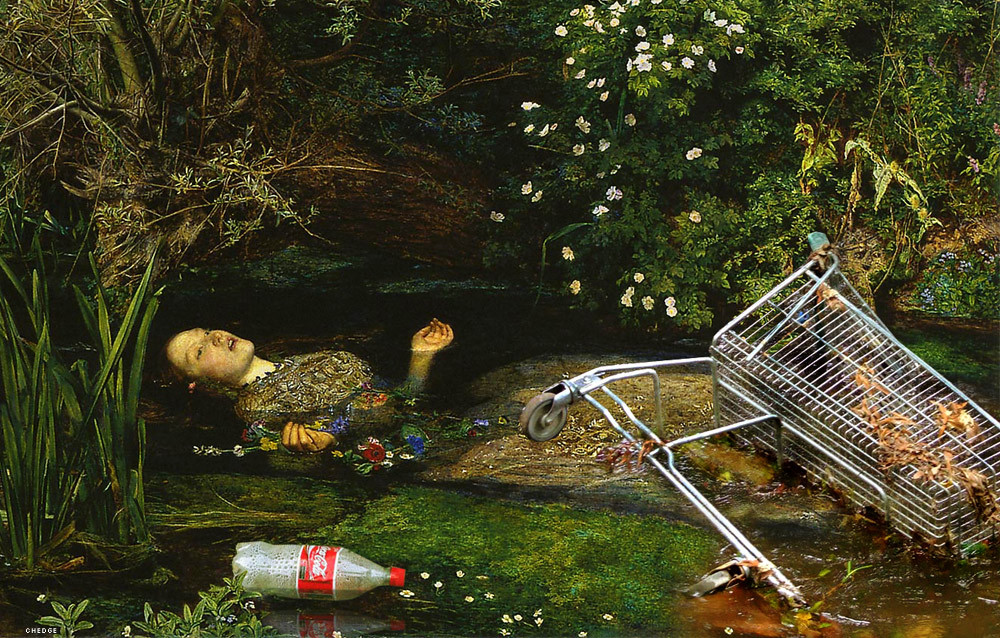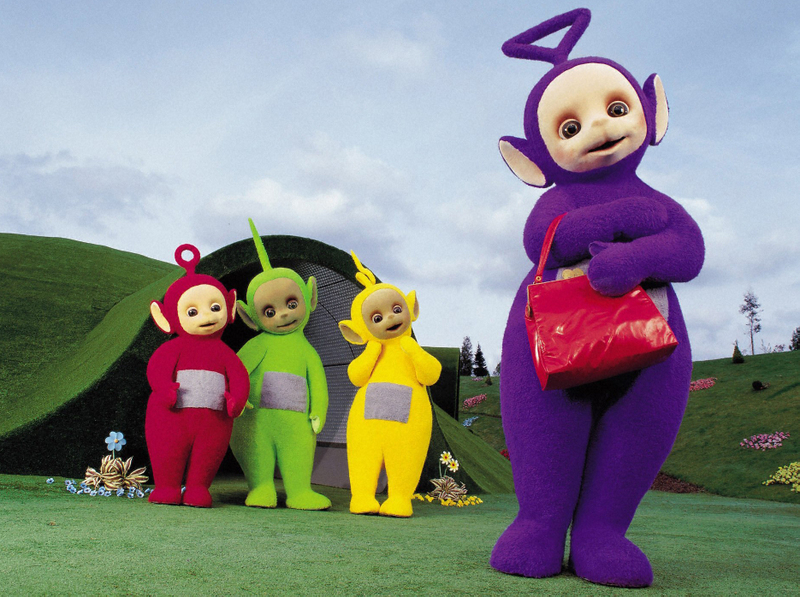Sibyl O’Malley is funny.
I suspected this when I read her play Lamentations of the Pelvis, but I wasn't quite sure. On Wednesday, O’Malley Skyped with my theatre class from an airport, and confirmed my suspicions.
Lamentations is an odd little play. Characters are named things like The Spinster, The Magician, and The Little Drummer Boy. The production notes give few hints for what to make of all this. The set, we learn, is “a mixture of specific naturalism and flat symbolism” (1). What does this mean? And how are we to determine which set pieces are which? Should Spinster’s tower be a full-on Rapunzel deal, or should she be standing on a chair? The chicken that that Second Wife loves so dearly: is this a live chicken on stage? A styrofoam package of meat? Perhaps a rubber chicken?
The costumes, it turns out, should be “iconic” (1). Iconic spinster-wear, coming right up. I picture something high-necked and Victorian, but in the nineties career woman version of the play, this costume could just as easily be a shoulder-padded blazer and slacks. (Do NOT do a Google image search of the word spinster! It will only depress you! Diane Keaton is not a spinster, Google!)
This ambiguity that I am pointing to is perhaps most heightened in regards to gender and casting. Take the character of Second Wife, who announces to anyone who will listen that she “has a penis.”
I wasn’t sure what to make of this upon first read. With each mention it takes on a more sense of humor, but I must admit that the first reveal is nothing short of confounding. Forgive me for quoting at length from the second scene of the play:
FIRST WIFE: How’s your penis, dear?
SECOND WIFE: Fine.
FIRST WIFE: Really?
SECOND WIFE: Yes.
FIRST WIFE: It’s not bruised?
SECOND WIFE: My penis?
FIRST WIFE: Yes.
SECOND WIFE: No.
FIRST WIFE: Shall I look at it?
SECOND WIFE: No, it’s fine.
FIRST WIFE: Let’s have a look.
SECOND WIFE: It’s my penis.
FIRST WIFE: I’m only trying to help.
(SECOND WIFE stands up and shows FIRST WIFE her penis)
FIRST WIFE: Oh.
SECOND WIFE: What?
FIRST WIFE: It’s not a bad penis.
SECOND WIFE: Is it any good?
FIRST WIFE: I can’t really say. Well. Goodbye!
Um. What?! My mind, of course, went immediately to Michel Foucault, as it often does. I thought, “oh, OK, I get it, this is a serious play! This is about the perverse implantation and the pathologizing of non-normative bodies, and about women enforcing patriarchy, the panopticon, self-policing, oh, and about Freudian psychoanalysis and penis envy made literal” and on and on…
As the production notes perhaps indicate, the play feels surreal, but also vaguely edgy, almost condemning or moralizing in a nightmarish fairy tale kind of way. And I assumed accordingly that this penis business was meant to be taken literally. Perhaps a comment on trans bodies in transition, or trans bodies not transitioning, or on making intersex bodies more visible. The opening production notes give no indication on casting preferences, which I also assumed to be some sort of intentional political move by the playwright, a gesture of radical inclusivity, if you will.
However, when I asked the airport-confined O’Malley about her intentions in terms of casting, the response was not what I expected.
I’m going to have to paraphrase, but she basically said that she wrote this play in response to a production at the university where she did her graduate work that “pissed her off.” It was apparently a version of Hamlet that featured a dozen Ophelias, each abusing herself in a more specific and horrible way than the last. O’Malley’s response to this was something along the lines of “maybe if she had had a penis she could have gotten some respect.”
 |
| This is what happens when you try to update Shakespeare? (Bruce Sterling's update on the John Everett Millais painting) |
So, according to the author’s intent, Second Wife’s penis is more or less a punchline. What would it take for you to respect me? A penis? Fine. Done. Moving on. Anyone seen my chicken?
Which is... funny.
Does this exclude “the penis” from fulfilling any of the other possibilities mentioned? Of course not. And this, of course, is what makes theatre truly radical. Multiplicity. And what makes the lack of specificity in the production notes legitimately, radically inclusive. Each production is a chance to enact a Foucaultian performance of O’Malley. Or a Freudian one, if one feels so inclined. Each production is a chance to experiment, to cast a different body in the role, with different parts, and to see just what becomes “specific naturalism” and what becomes “flat symbolism.” And amen for that.
O'Malley, Sibyl. Lamentations of the Pelvis. 2012. TS. Provided by playwright.
O'Malley, Sibyl. Personal Interview. 20 Nov 2013.
Works Cited
O'Malley, Sibyl. Lamentations of the Pelvis. 2012. TS. Provided by playwright.
O'Malley, Sibyl. Personal Interview. 20 Nov 2013.




